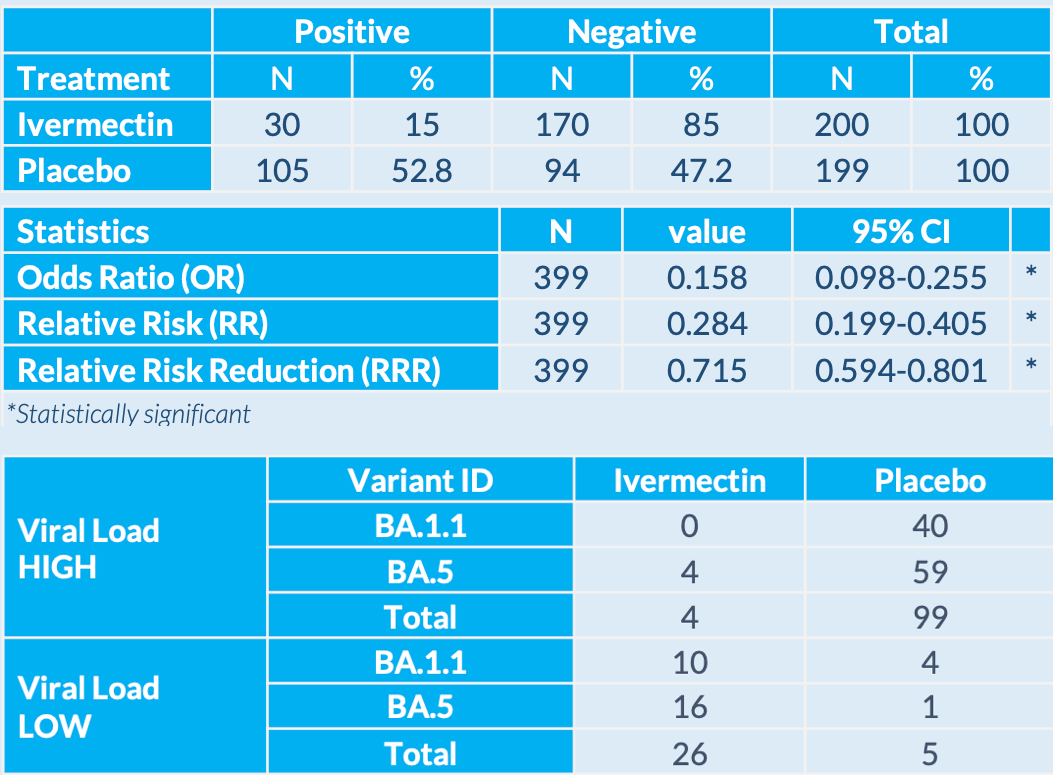
The SAIVE Trial, Post-Exposure use of ivermectin in Covid-19 prevention: Efficacy and Safety Results
Desort-Henin et al., ECCMID 2023 (results released 1/5/2023), SAIVE,
NCT05305560, Jan 2023
PEP RCT 399 patients in Bulgaria showing significantly lower COVID-19 cases with ivermectin prophylaxis, and significantly lower cases with high viral load. No participant had severe symptoms, required oxygen, or was hospitalized. All patients with COVID-19 were treated with vitamin C and vitamin D.
This trial makes the Cochrane analysis report statistically significant efficacy for prophylaxis, although they do not appear to have acknowledged this yet. There are currently 4 prophylaxis RCTs, and all 4 show statistically significant efficacy of ivermectin. Cochrane ignored them by simply choosing to only include post-exposure prophylaxis RCTs, even though they were included for the paxlovid analysis with many of the same authors. At the time there were no post-exposure RCTs and they knew that including any one of the 3 pre-exposure prophylaxis RCTs would show statistically significant efficacy.
|
risk of case with high viral load, 96.0% lower, RR 0.04, p < 0.001, treatment 4 of 200 (2.0%), control 99 of 199 (49.7%), NNT 2.1.
|
|
risk of case, 71.6% lower, RR 0.28, p < 0.001, treatment 30 of 200 (15.0%), control 105 of 199 (52.8%), NNT 2.6, primary outcome.
|
|
Effect extraction follows pre-specified rules prioritizing more serious outcomes. Submit updates
|
Desort-Henin et al., 5 Jan 2023, Double Blind Randomized Controlled Trial, placebo-controlled, Bulgaria, preprint, 5 authors, study period March 2022 - October 2022, dosage 200μg/kg day 1, 100μg/kg days 2-28, trial
NCT05305560 (history) (SAIVE).
